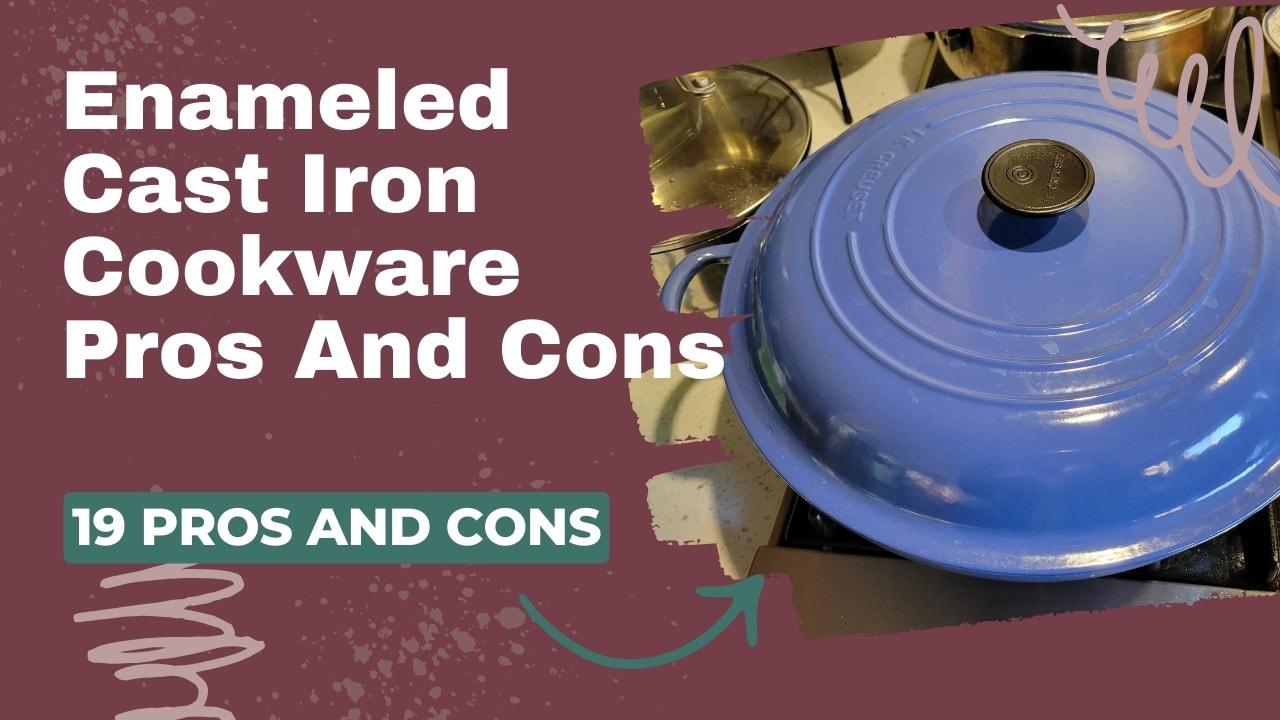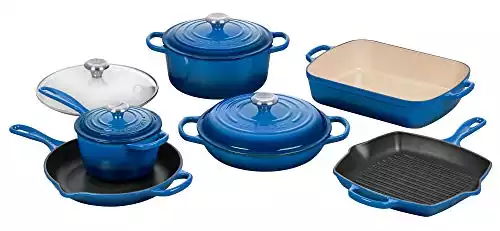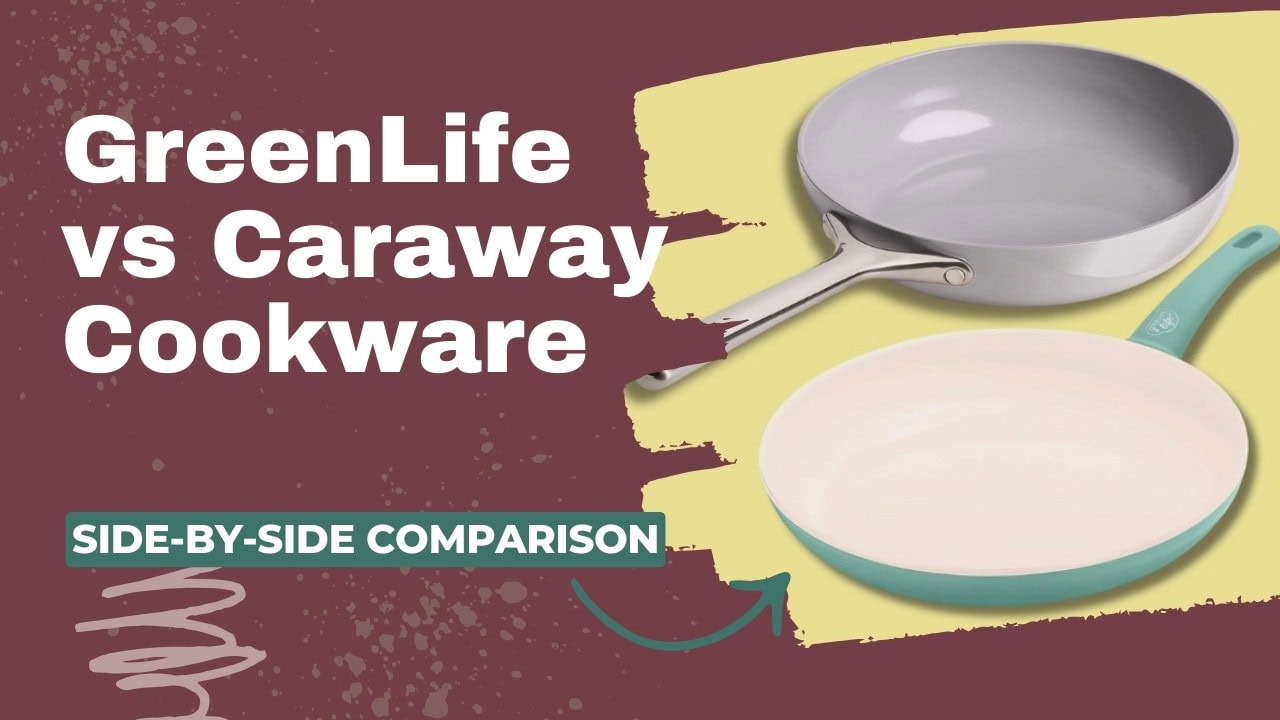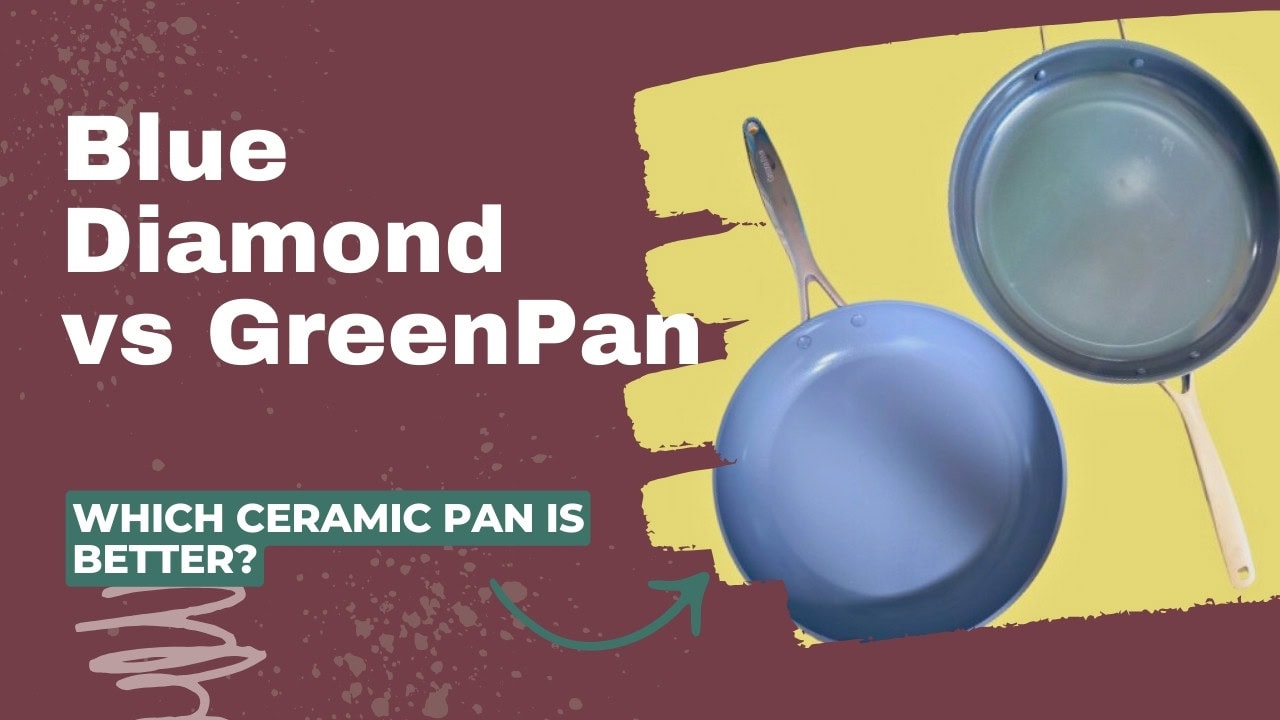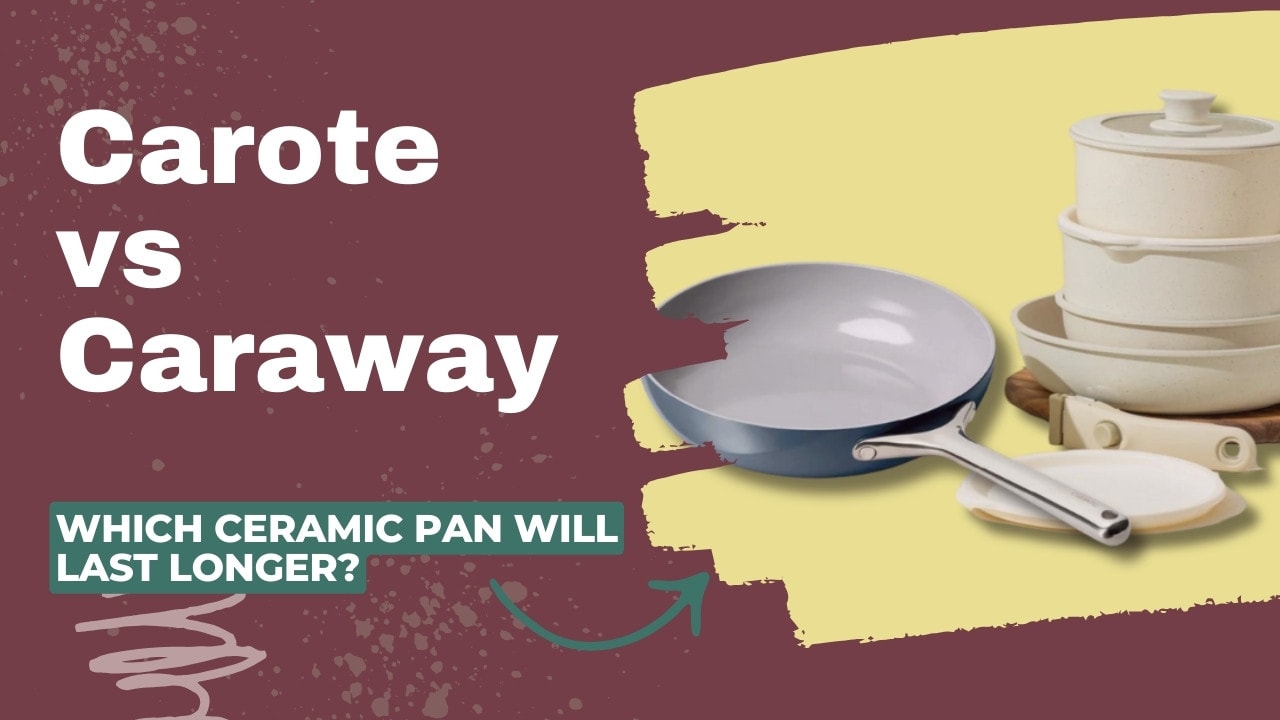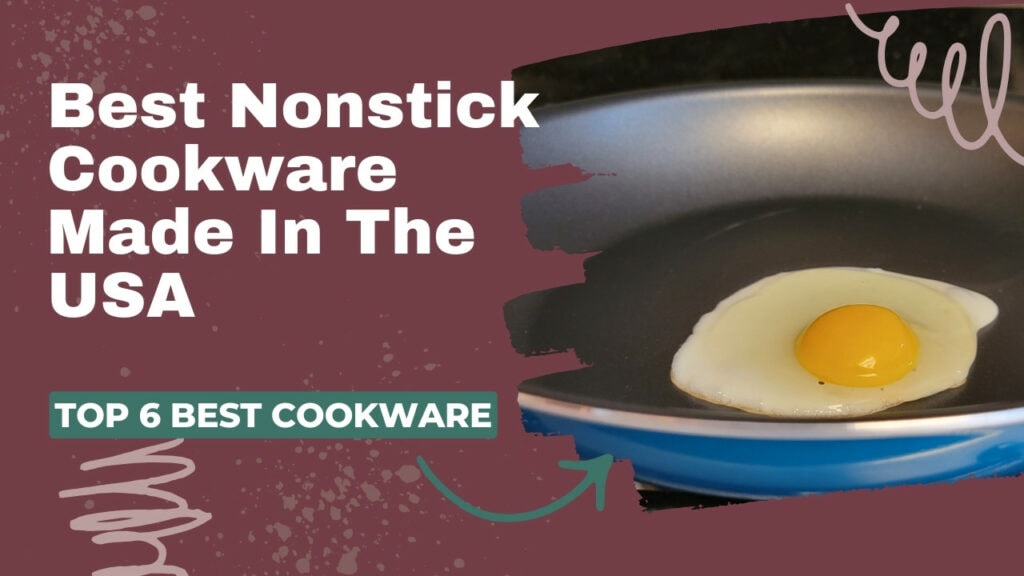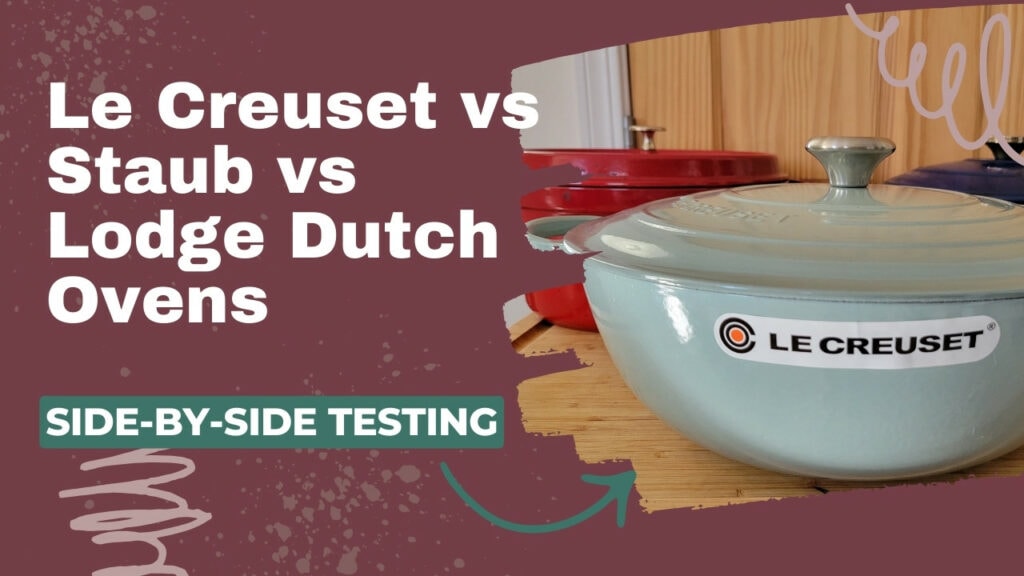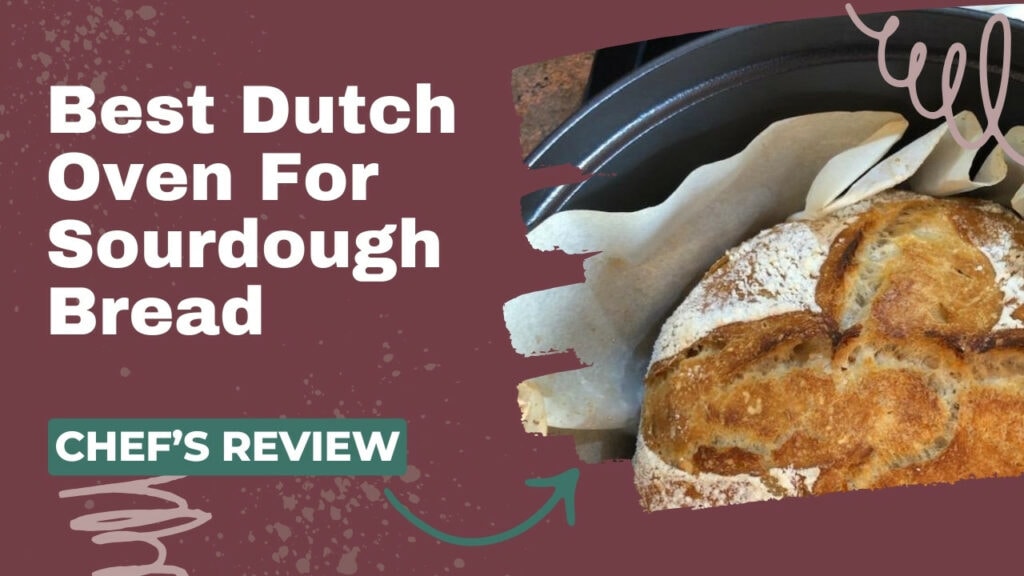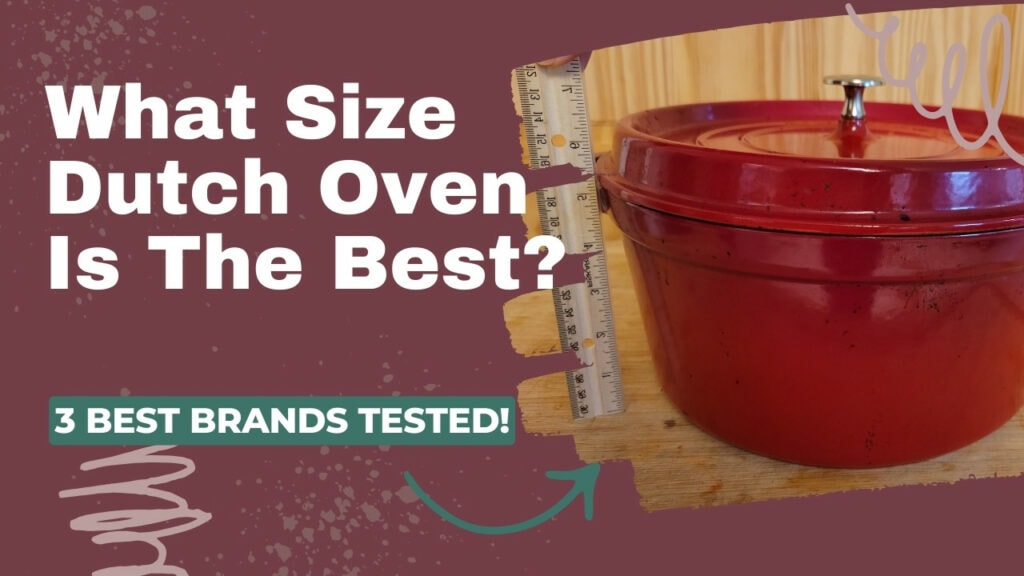If you’re anything like me, you’ve been thinking over and over about whether or not to invest in some enameled cast iron cookware. It took me months of thinking about it to take the plunge and buy a Le Creuset Dutch oven, but the investment turned out to be worth it!
So, I wanted to write the guide I needed when making my decision. Maybe if I had these advantages and disadvantages of enamel cast iron laid out like this, I could have made my decision much faster!
In this article, I’m going to run through every pro and con of enamel cast iron so you can decide whether it is a good fit for your kitchen.
Pros and Cons of Enameled Cast Iron Cookware
Pros
Cons
Advantages of Enameled Cast Iron Cookware
1. Appearance
There’s no getting around the massive visual appeal of enamel cast iron. Whether it’s the traditional Le Creuset Dutch ovens or the more complex vegetal creations from Staub, enamel cast iron is one of the most attractive kinds of cookware. These pots are so stunning they can be stored on open shelves to add a pop of color to your kitchen.
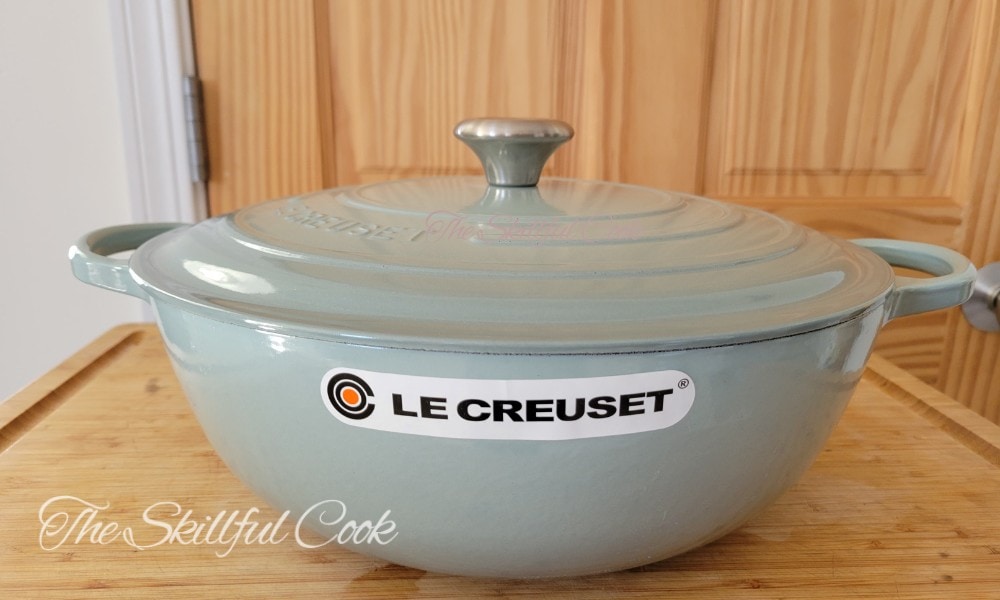
2. Non-reactive
Enamel cast iron’s coating means that, unlike regular cast iron, it won’t react chemically with acidic foods. You can cook any dish with this kind of cookware without iron leaching into your food and leaving behind a metallic taste.
3. Doesn’t Need Seasoning
Regular cast iron needs frequent seasoning to maintain its nonstick ability, but that’s not a worry for enamel cast iron. All it needs is a thorough cleaning and drying between uses. The enamel surface is considered semi-nonstick if you use it correctly.
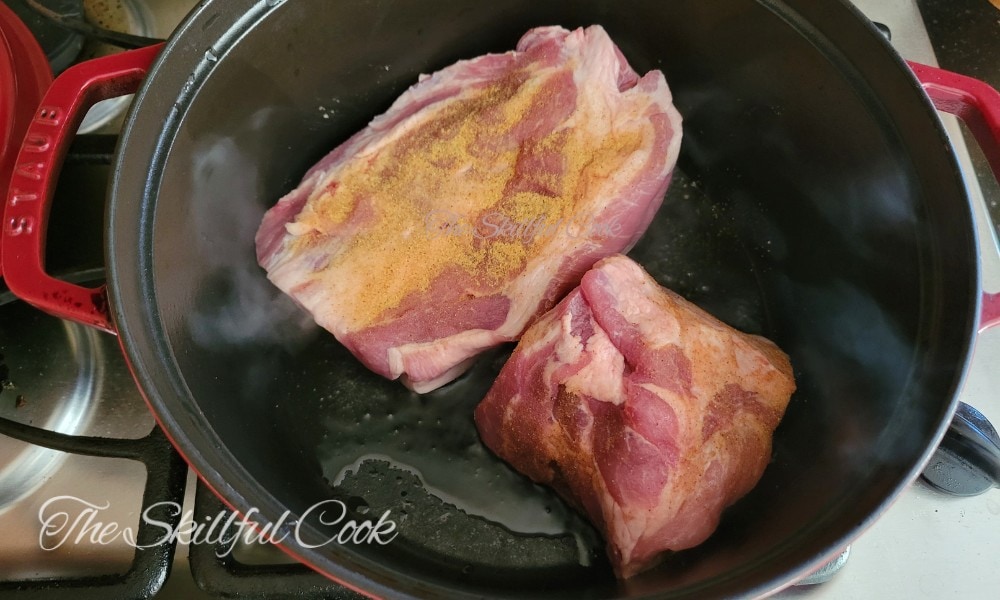
4. Versatile
Since enamel cast iron is nonreactive, you can cook more dishes in it than regular cast iron. Enamel cast iron is suitable for baking, boiling, frying, and sauteeing any ingredient, no matter how acidic. It transfers seamlessly from stove to oven and is compatible with all cooktops.
5. Heat retention
Raw cast iron is so popular because it has incredible heat retention: It comes to temperature slowly but hangs on to the heat. Well, with enamel cast iron, you get all the heat retention properties of cast iron. This property makes this cookware ideal for slow cooking and baking. Since the lids are also made from iron, they will heat up in the oven as well. This creates even heat from all directions, speeding up the cooking process.
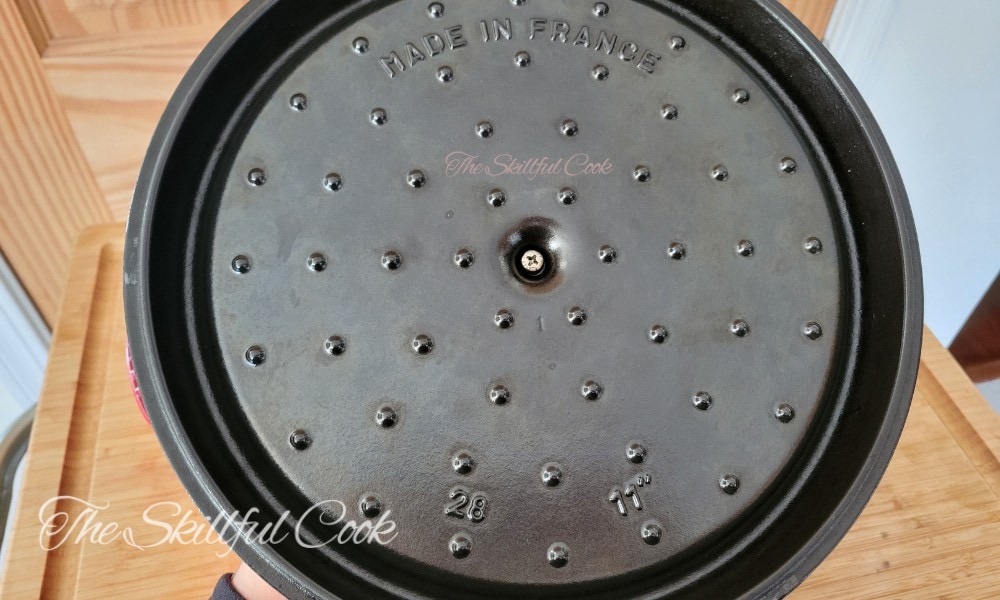
6. Semi-Nonstick
Cooking on enamel cast iron takes a bit of a learning curve because it’s not truly nonstick. Eggs aren’t going to slide off an enameled skillet in the way you might be used to with a nonstick pan. But once you get the hang of it, you’ll find enameled cast iron doesn’t stick too badly, and is easy to clean when it does. You’ll need to preheat your pan well, use enough oil, and only turn your ingredients after they’ve browned and naturally released a bit from the pan.
7. Easy to Find
There are three leading brands I recommend buying reliable enamel cast iron from: Le Creuset, Lodge, and Staub. Although there aren’t a lot of brands I trust, their products are easy to get hold of. All of these brands are available on Amazon and retail from their websites. There are also Le Creuset outlet stores across the US and in many other countries if you want to shop in person.
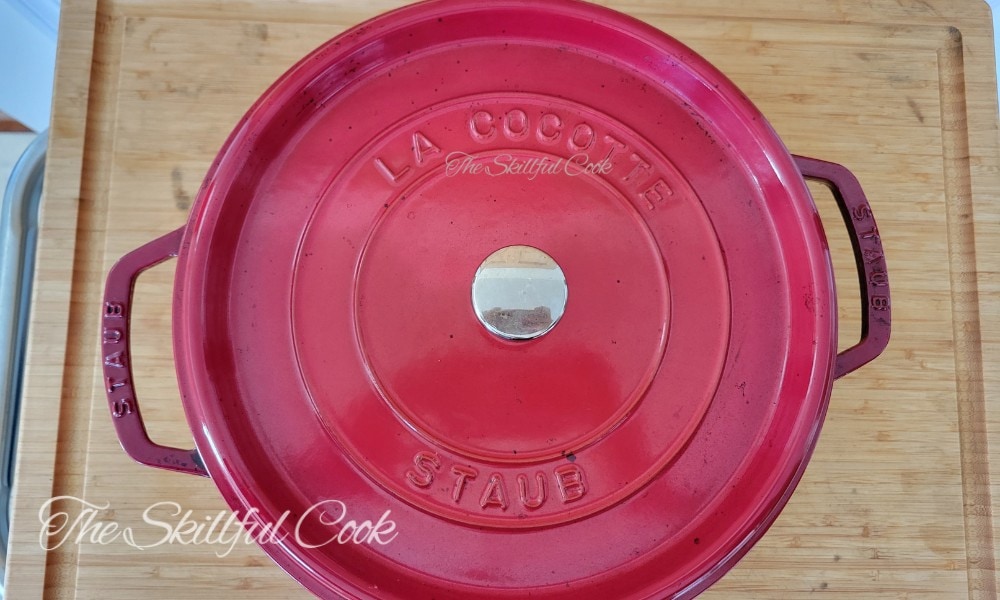
8. Potential Wellness Benefits
Many people consider enameled cast iron cookware to be a part of a healthy lifestyle. Enameled cast iron should not transfer iron into your food, and won’t release potentially dangerous fumes if overheated, like PTFE nonstick cookware. Stick to buying from reputable brands that use third-party testing to verify that their products are lead-safe.
9. High Quality
If you invest in a good piece of enamel cast iron cookware, you’ve bought yourself an heirloom piece. It should last you a lifetime if you take care of it; you can even pass it down in the family. High-quality enamel cast iron is less prone to thermal shock, chipping, or scratching, which extends its lifespan.
Disadvantages of Enameled Cast Iron Cookware
1. Heavy
Just like cast iron, enamel cast iron is very heavy because it’s made from one solid piece of cast metal. This makes it difficult to maneuver, especially for people with low mobility or strength. Its weight, coupled with the rough-edged bottom sometimes found on these pans, can easily scratch glass stovetops. (Stainless steel and aluminum are smooth, lightweight cookware options that you could try instead.)
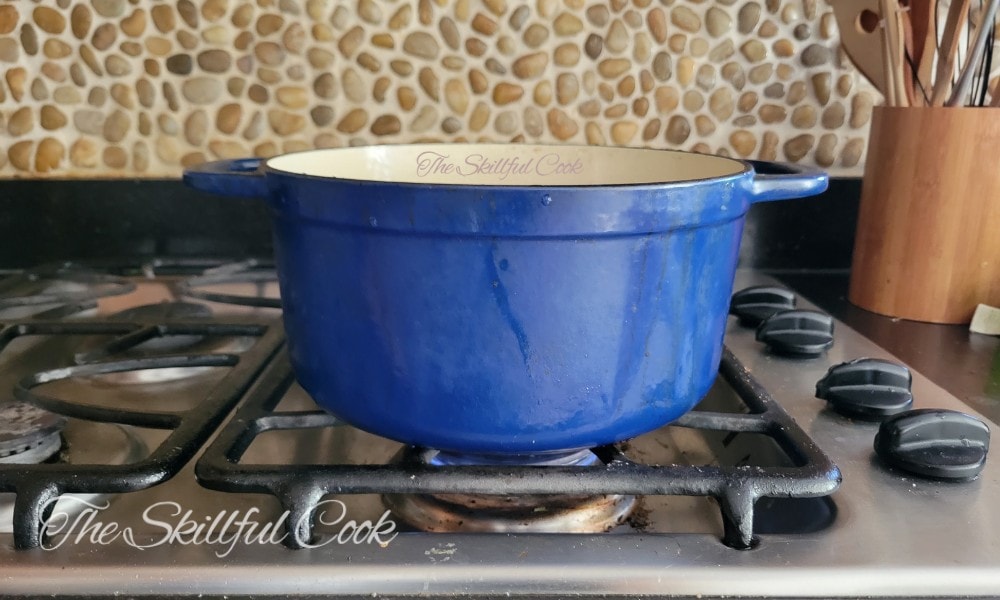
2. Needs Hand Washing
Unfortunately, there’s no popping your enamel cast iron in the dishwasher for easy cleanup. This could damage the enamel and allow the exposed iron to rust. I hand wash my Le Creuset with hot, soapy water and a soft sponge. To remove any stuck food, I’ll fill the pan with half water and half vinegar and boil it for a few minutes on the stove.
3. Risk of Chipping or Scratching
Chipping and scratching of the enamel is less likely with reputable brands, but it’s still possible if you handle the cookware roughly. Chipping exposes the iron, which may react with your food. The exposed iron can also rust or corrode. The health risks of accidentally consuming an enamel chip are not known, so it’s best to avoid this if possible.
4. Handles Get Hot
Enamel cast iron is so popular because the material is a great conductor; unfortunately, this also applies to the handles. Some brands come with handle covers for their skillets, but otherwise, you will need to use an oven glove to handle them.
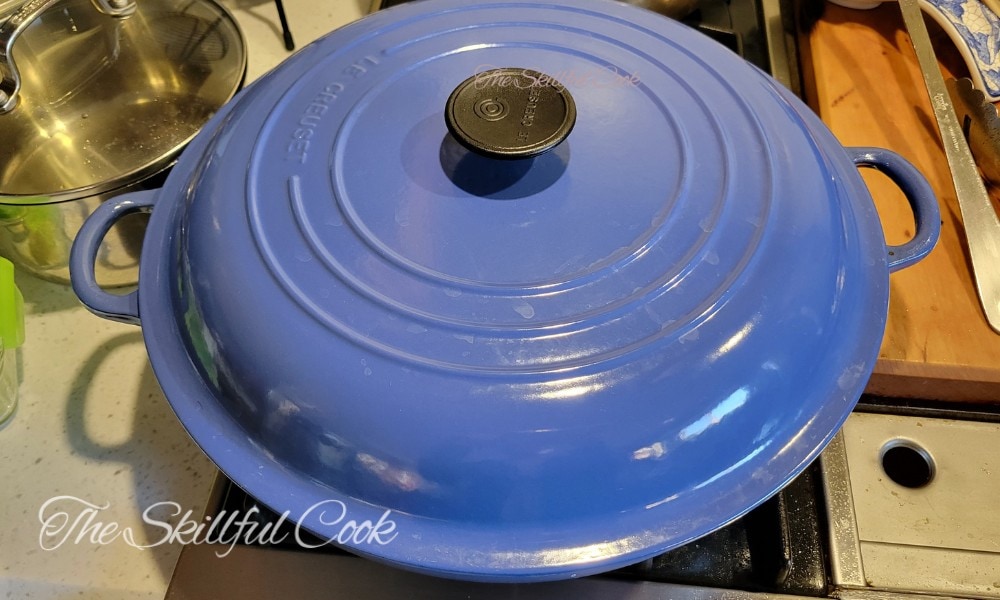
5. No Metal Utensils
Please don’t use metal utensils on enamel cast iron! A metal spoon or spatula’s sharp edges can easily scratch the enamel surface. If you’re very rough, they could even cause chipping. It’s best to use plastic, silicone, and wooden utensils on enameled iron.
6. Stains
Unfortunately, the pristine glossy enamel will mark and stain over time, especially when food sticks to it. Some brands – notably Staub– have a black textured enamel interior option, which won’t show marks as badly. When you’re washing your enameled iron, pay attention to grease or stains on the exterior enamel.
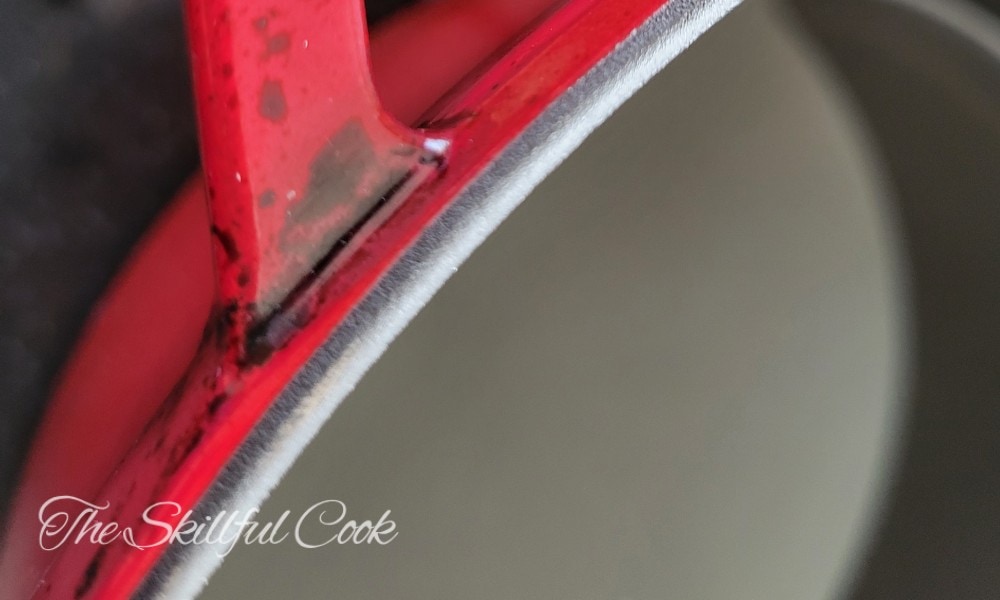
If you don’t clean these thoroughly every time you use the pan, they will quickly become very hard to remove.
7. Hairline Cracks
Hairline cracks are not a common issue with high-quality enamel cast iron, but they can still happen through rough handling or dropping. Thermal shock can also cause cracks, so be sure to place your pan on a pot holder and not onto a cold surface.
8. No Broiling
Most enamel cast iron is typically oven-safe to 400°F. The broiler reaches temperatures of 500-550°F. At these temperatures, the enamel will start to break down. In contrast, raw cast iron is oven-safe up to 800°F.
9. Expensive
Enamel cast iron is much more expensive when compared to cast iron. This is because the enamel coating material and the process of coating the pans are very costly. More expensive enamel cast iron tends to be more reliable and long-lasting, so you need to decide whether the price tag is worth it.
10. Concerns Regarding Lead and Heavy Metals
Amazon is full of cheap knock-off enamel cast iron cookware that looks great for a more affordable price than the name brands. Unfortunately, these brands are likely not third-party tested under California Prop 65 regulations, which could mean they contain traces of lead.
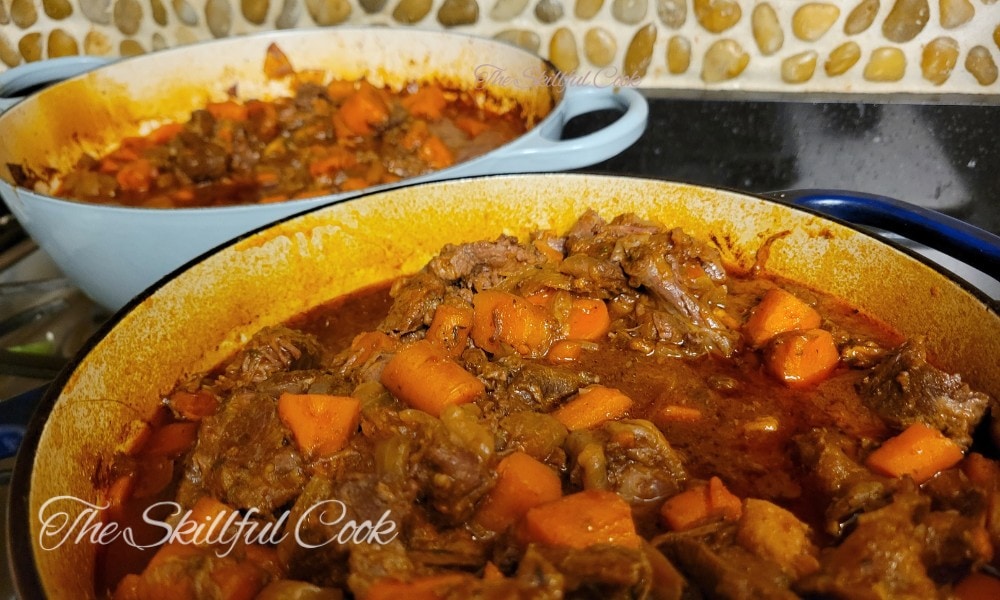
Modern techniques for making enamelware have predominantly done away with the use of lead in their production. But many prefer to stick to the brands that are third-party tested and declared lead-safe, just in case.
I recommend buying from reputable brands like Lodge, Le Creuset, and Staub, which are all tested and cleared by third-party labs. Please read my thorough writeup on the safety of enameled cast iron for more details.
✅ Attractive color options
✅ Long-lasting
✅ Induction compatible
✅ Dishwasher safe
✅ Oven safe
Conclusion: Is Enameled Cast Iron Worth It?
So, after taking in all this info, is enamel cast iron worth the investment? Overall, enamel cast iron is suitable for people who do a lot of varied home cooking. It’s perfect for home chefs who enjoy slow cooking and one-pot meals that save on dishes.
If you are buying enamel cast iron from a reputable brand and you have time in your life to treat it with care, I think it’s well worth buying. The pros far outweigh the cons, especially when considering that this cookware is an heirloom piece. If you invest the money now in a high-quality enameled cast iron piece, it will pay for itself many times over.
I hope this has helped you decide if enameled cast iron is a good fit for you. If you have any questions, feel free to drop them down below.

